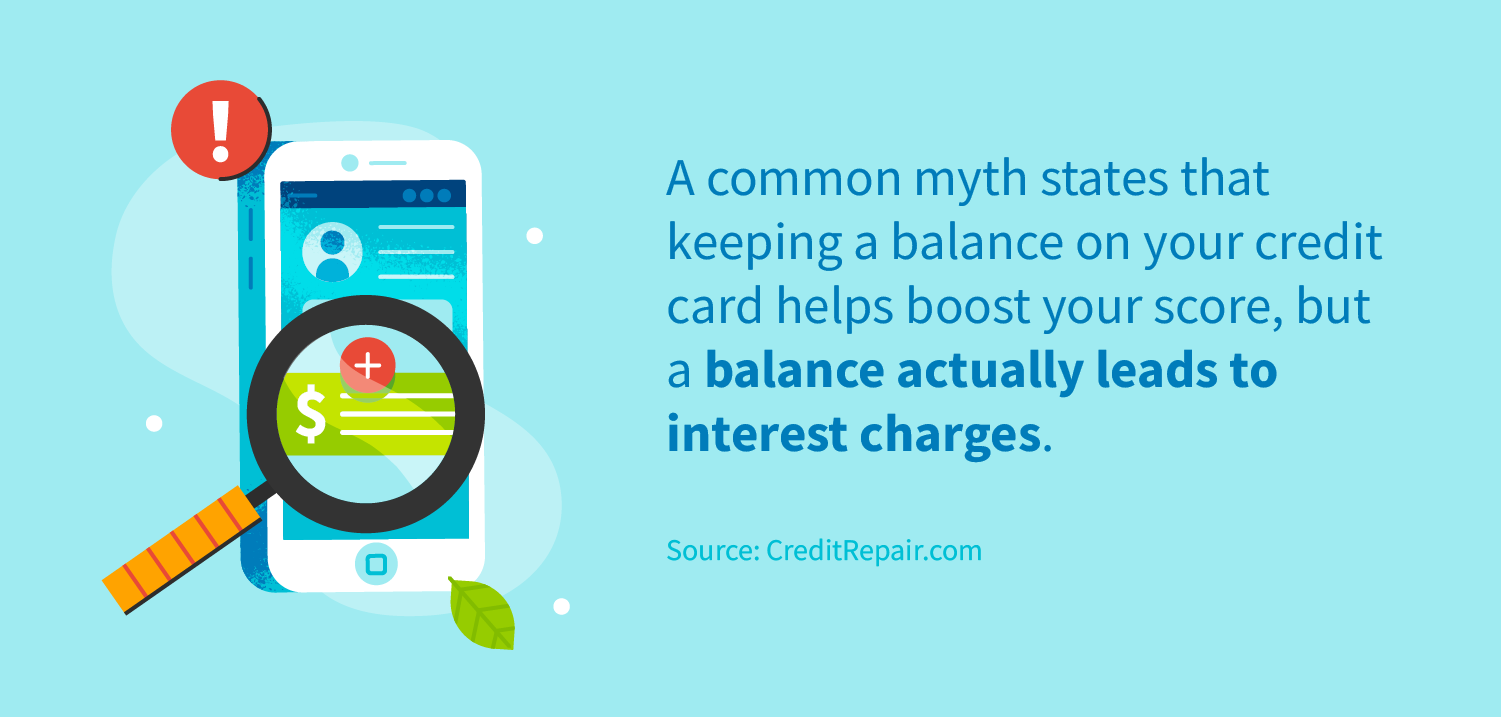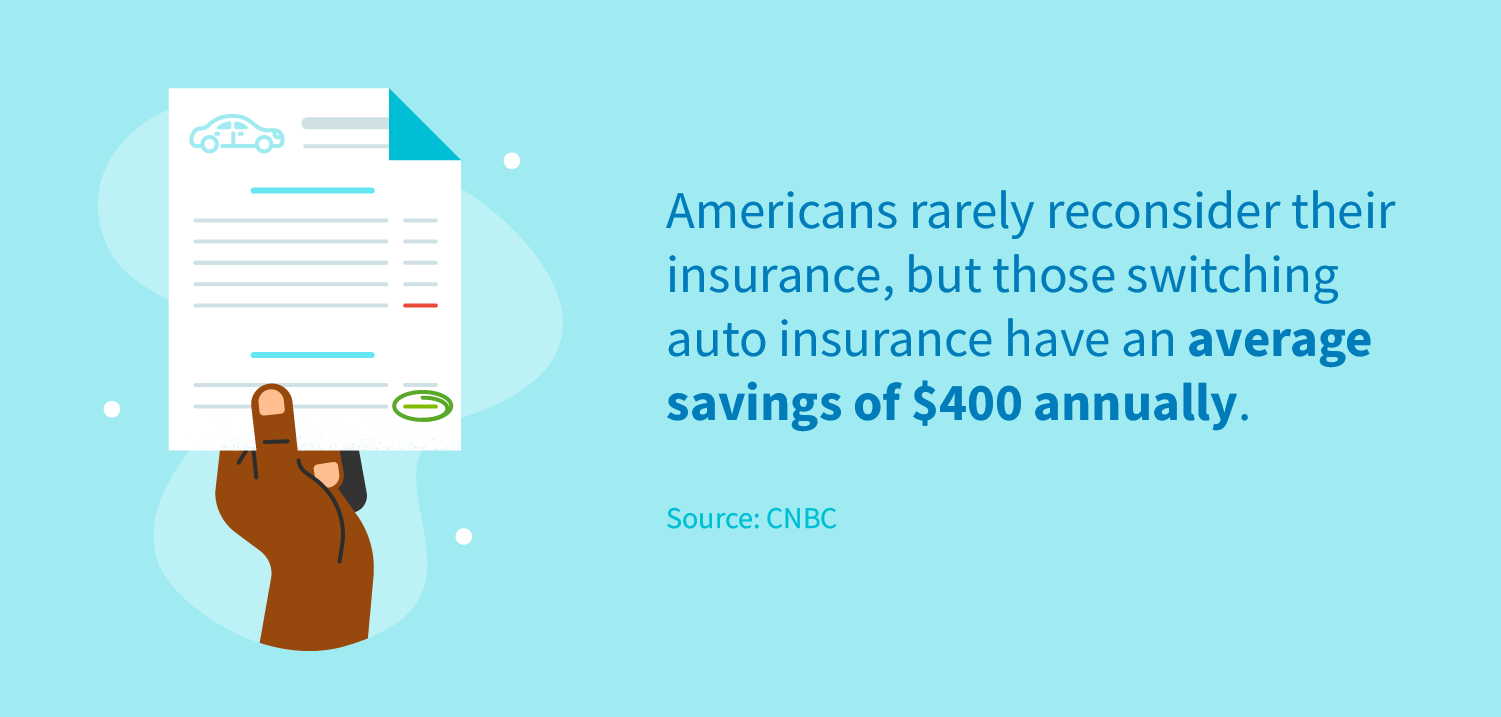Disclosure regarding our editorial content standards.
Does your spending make you nervous? Maybe you see your bank and credit card statements and get a sinking feeling at how many things you’ve bought that month? The truth is that many of us are wasting money in various ways: buying things we don’t need, throwing stuff away we once thought we had to have and blissfully ignoring the monthly fees and subscriptions that whittle away at our bank account balances.
Taking a step back to audit your spending is an important part of improving your approach to personal finance—and it’s the only way to know if you’re wasting money. Read on for the full list of things you may be wasting money on and ideas for how to save so that you have more money for what’s really important to you.
1. Dining out frequently
The Bureau of Labor Statistics found that 44 percent of the money Americans spend on food is for dining out, including an average weekly spend of $18 on lunch and $28 on dinner. That adds up to almost $3,500 spent on eating out over the course of a year—a huge cost compared to preparing meals at home.
What to do: You don’t need to stop eating out entirely, but consider cutting back on the amount you spend by planning your meals in advance and bringing your lunch to work or school.
2. Forgotten subscriptions
If you haven’t taken a look at your recurring charges recently, you may be surprised to see where your money is going. The average American now spends $273 every month on subscriptions according to West Monroe—or a total of more than $3,000 each year.
What to do: Giving up all subscriptions is probably impractical, but many people have found that rotating subscriptions helps. Consider subscribing to a streaming service for a month to watch the shows you care most about, then cancel for a while.
3. Expensive cell phone plans
Remember when we used to pay 10 cents for each text message? Cell phone plans now include a lot more, but they cost a lot more, too. Research from Allconnect found that the average family pays anywhere from $175 to $230 each month for their unlimited data cell service. While phones are more or less essential in our lives now, there are cheaper plans available if you look around.
What to do: Reevaluate what you need in a cell phone plan. Many people have unlimited data but don’t actually use it because of widely available Wi-Fi. And prepaid plans offer huge savings for certain types of usage.
4. Individual plastic water bottles
Despite the increased awareness of the harm caused by plastic, bottled water sales continue to rise every year. In fact, the average U.S. resident now consumes 45.2 gallons of bottled water every year compared to just 27.8 gallons in 2010. Fresh water is essential, but the cost of individual bottles isn’t just harmful to the environment—it’s a huge drain on your wallet as well.
What to do: Consider using a reusable water bottle instead of individual plastic bottles. If your area doesn’t have readily available fresh water, using large refillable jugs is more cost-effective and environmentally friendly.
5. In-app purchases
Small in-app purchases, known as microtransactions, have taken off in the last few years. Most of us used to laugh at the idea of paying for in-game currency for a smartphone game. But as of 2020, the average iPhone user spends $138 annually on in-app purchases, up from $33 just six years ago.
What to do: Avoid saving your credit card information on your phone’s app store. Taking a moment to enter your credit card details gives you time to consider whether you really need to spend that money at all.
6. Credit card interest charges
Many people have heard the myth that keeping a balance on your credit card helps build your credit score, but it’s not true. In fact, keeping a balance is likely to decrease your score, and it will definitely lead to interest charges. Credit card interest is particularly high, so any balance you leave on your card will mean spending money on interest rather than something else that’s more important to you.
What to do: Pay your credit card balance on time and in full every single month. If you’re struggling with your score or your financial habits, reach out to a credit repair company.

7. Brand-new cars
A car is often essential for getting to work or school, and you should definitely be driving a safe vehicle. However, many people fall into the trap of upgrading their car too often, especially when the dealership calls and offers a “great value.” Many of us get lured into the trap of hearing about the shiny new car’s monthly payment—but what’s the real cost? And do you need a new car right now?
What to do: Look at Edmunds’ cost of car ownership calculator to give yourself an idea of whether a new vehicle fits into your financial lifestyle right now.
8. Extended warranties
You may have been getting scam phone calls about your car’s extended warranty, which you should definitely ignore. But even when warranties aren’t a scam, they often aren’t a great deal. Most warranties come with many exclusions and exceptions, so the hundreds or thousands you spend to protect your car or house may not even cover you when you finally need a repair.
What to do: Set aside the money you would have spent on your warranty each month to prepare for eventual repairs.
9. Meal delivery services
Having a fresh restaurant meal sitting on your doorstep is a special kind of satisfaction, but the cost lurking behind your order may upset your stomach. Popular meal delivery services can charge up to 91 percent more than you’d pay for food in the restaurant—so suddenly that $10 Korean beef bowl costs nearly $20, and that’s before the tip.
What to do: Skip the high markup from meal delivery and call the restaurant directly to pick up your food—or take up cooking to save money and impress your friends.
10. Unused memberships
A membership can be a wise investment if you use it—but many of us let our membership fees pile up and get nothing in return. Did you know that gyms count on a majority of their members showing up seldom or never? The average gym membership costs $58 each month, and many people with a membership rarely set foot inside.
What to do: If you’re keeping your gym membership out of guilt or aspiration, consider canceling temporarily. You can still get a great workout at home by using beginner programs online.
11. Multi-level marketing companies
In recent years, a host of companies have emerged promising that you can be your own boss, work from home and find massive financial success. The catch? You have to invest your own money to get started. These organizations, called multi-level marketing (MLM) companies, encourage their members to recruit others to increase their revenue. MLMs are required to post their financial statistics, so you can see the truth for yourself: One popular company, Young Living, revealed that in 2020 almost 90 percent of its members had a median annual income of $0.
What to do: Save your money and avoid any organization that promises to make you rich if you can convince enough of your friends to join. To earn extra cash, consider a flexible gig that matches your skill set.

12. Brand-name products
What’s the difference between a brand-name product and the generic equivalent? Usually not much—but you’ll certainly pay more. For household staples like cleaning products and over-the-counter drugs, buying the brand-name product will likely earn you some status points and not much else.
What to do: Whenever possible, opt for generic products to save yourself a few dollars at a time, adding up to some serious cash over the long term.
13. Coffee shop drinks
Nothing beats a well-made coffee prepared by a talented barista, and you hardly notice a few dollars disappearing from your bank account with each trip to the local coffee shop. But the average American millennial spends over $2,000 at coffee shops annually—and those aged 35-44 spend almost as much, spending $1,410 each year.
What to do: Consider brewing more often at home, which is much more cost-effective and can create a nice morning ritual.
14. Lottery tickets
What would you do with a thousand dollars? It’s nice to imagine all of the possibilities, and you don’t even have to win the lottery to follow through on them. Around half of all Americans spend on average more than $1,000 on lottery tickets each year, so a number of people could have much more money in their pockets just by opting to save rather than hoping to win big. After all, your chance of winning the jackpot with six correct numbers is around 1 in 14 million.
What to do: Take the money you would’ve spent on lottery tickets and set it aside. By the end of the year, treat yourself to something you want with your very own jackpot.
15. Overpriced groceries and wasted food
Don’t think for a second that we’re suggesting you give up the grocery store, which is a great place to save money on food and find healthier choices. However, you should be careful to avoid wasting money at the store. For example, the average American family of four throws out $1,500 in food per year—most of it perfectly fine to eat.
What to do: Watch out for spending traps at the grocery store. For instance, buying pre-cut vegetables and fruits often costs significantly more. By optimizing your meal plans, freezing food or sharing ingredients with your neighbors, you can avoid throwing away food you bought with your hard-earned money.
16. High-interest mortgage
A house is likely the most expensive purchase most people will make in their lives, and a mortgage is inevitable for almost everyone who doesn’t have hundreds of thousands of dollars socked away. But if you’ve had your mortgage for a while, you could be wasting money. When interest rates decrease, the opportunity to refinance a mortgage offers the potential for huge savings. Last year, a typical borrower refinanced a $300,000 loan from 4.3 percent to 3.1 percent—a savings of more than $75,000 in interest over 30 years.
What to do: Take a look at your current mortgage cost, and reach out to a bank or credit union to see if you qualify for a lower interest rate.
17. Unneeded storage units
Storage units can be a useful temporary solution, but long-term storage can become a money pit. In some cases, we end up storing items that we completely forget about and may not need at all. But we continue to pay so we don’t have to deal with them. Around 13.5 million households in the United States rent a storage unit at an average cost of more than $1,000 each year.
What to do: Take a look in your storage unit and ask yourself: “What will this stuff be worth to me in 10 years?” The cost to store it that long may be more than $10,000, so if the answer you come up with is less, it might be time to let the rental lapse and to sell or donate your belongings.
18. High-cost insurance
A variety of insurance is useful or legally required: health insurance, car insurance and homeowners insurance, for example. But the costs of insurance tend to rise unless you take an active role in reevaluating your plans from time to time. Research shows that most Americans rarely reconsider their insurance, and the average savings is more than $400 for switching auto plans.
What to do: Shop around for new insurance plans. You may even be able to stay on your current plan if you show your insurer a competitor’s offer and ask them to match it.

19. Piles of books
Reading is one of the most satisfying and enriching activities. On the other hand, many of us buy books that we only read once, which may be a poor investment. In total, Americans spend almost $20 billion on books annually, and our bookshelves are littered with books we have never touched or will never read again.
What to do: Consider opting for used or library books. Your local library may be part of a system that lets you request books from nearby libraries, and most libraries now also provide rentals for e-books and audiobooks.
20. New clothes every season
A wardrobe refresh can give you an emotional rush, but many of us are stuck in a routine of buying and throwing out clothes far too quickly. The average household spends almost $1,500 each year on clothing, and fast fashion has led many of us to believe that wearing clothes for more than a season is taboo.
What to do: Consider taking a trip to the thrift store or buying more timeless pieces to avoid the temptation to constantly purchase new clothes.
21. Lifestyle creep
Lifestyle creep is the financial cycle that can follow a successful career—earn a bit more, spend a bit more. Before you know it, your actual net worth isn’t increasing because all of your extra income is going toward a more lavish lifestyle. While indulging yourself from time to time is healthy and beneficial, it’s important to be mindful of where your pay increases are going.
What to do: Take stock of your expenses—essential and nonessential—and make sure that a part of each pay raise is going toward your savings and retirement.
22. Costly cable services
While streaming services have taken hold in recent years, cable still has a firm grasp on our entertainment dollars. More than 65 percent of Americans pay for cable, and for all they are paying, most people only watch a few channels out of the hundreds their plans include.
What to do: Consider cutting the cord if it will help you save money—a combination of streaming services and sports packages may still be cheaper than your monthly cable costs.
23. Simple home repairs
Just when life seems to be going well, it seems like something is likely to break down. When the item in question is important, like a toilet or an air conditioner, most of us are quick to call the repair company. Nowadays, though, a surprising number of quick fixes around the house are a lot easier with a quick video tutorial online—and you could save hundreds. For example, an air conditioner capacitor costs just $20, but your bill could be upwards of $300 if you call for support.
What to do: Flex your DIY muscles and consider tackling some jobs around the house to save on repair bills. Of course, be careful and use proper precautions when working with electricity and plumbing.
24. Cartons of cigarettes
If you’re finding it hard to kick the nicotine habit, you aren’t alone: More than 1 out of 10 American adults regularly smoke cigarettes. But the costs of cigarettes are real and varied. The cigarettes themselves are increasingly expensive, and the average pack-a-day smoker will spend more than $2,000 annually on cigarettes. Beyond that, the health care costs associated with smoking-related illness top $300 billion annually in the United States.
What to do: Kicking the habit can be difficult, but reaching out to your doctor for support could save you a ton of money—both now and down the road.

25. Frequent pest control
It may be a myth that everyone eats spiders while they sleep, but having bugs around the house is unsettling regardless. With more than a third of homeowners and renters spotting roaches, it’s no surprise we’re keen to rid the world of bugs. Pest control services promise to clear out bugs from your home, and many are quite effective at following through. That said, getting caught in a contract for pest control can be costly or even unnecessary in many cases.
What to do: Use pest control services as needed rather than signing up for a lengthy contract, or consider using natural alternatives to deal with pests in specific areas.
26. Deferred maintenance
Maintenance tasks usually aren’t a glamorous way to spend money. For instance, having your furnace checked, draining your water heater or having your roof inspected feel like unnecessary costs when there’s very little immediate return. But deferring maintenance is a risky game—a huge repair could be on the horizon if you don’t take care of little problems over time. While it may feel like a waste to put a bit of money into your car or house, the real waste is spending thousands or tens of thousands of dollars after a catastrophic breakdown.
What to do: Set up a maintenance schedule for any valuable property you own, like a house and a car, and set aside $1 per square foot each year for inevitable repairs or replacements down the road.
27. Lawn and yard services
Hiring out the lawn and garden can feel like a quick win to get some time back. Unfortunately, the cost of yard maintenance can quickly get out of control. Plus, doing yard work can be quite relaxing and even good for your health. Livestrong estimates that an hour of mowing or gardening can burn up to 400 calories, so you may be able to save yourself money and a trip to the gym with a weekly yard work routine.
What to do: If you’re physically able, save on the recurring yard work charges by grabbing your rake and mower for some quality time in the garden.
28. Luxurious timeshares
A timeshare provides joint ownership of a vacation property, and the allure of having a resort destination at your beck and call is enticing for many people. But there’s a reason that most timeshares are sold in high-pressure pitches while people are on vacation: that’s not when you’re making your best financial decisions. Timeshares generally don’t appreciate in value, and most also include yearly maintenance fees.
What to do: Skip timeshares entirely and keep your flexibility by staying in a hotel, hostel or bed and breakfast—they’ll often cost less, too.
So there you have it: a long list of ways to save money by wasting less. While everyone’s financial situation is different, almost all of us waste money in one way or another. Taking some time to review your budget and recent transactions could help you reevaluate your spending—and in turn reclaim some cash for a new project, a dream vacation or an important purchase.
29. Avoidable fees
Some fees are unavoidable, but others you should work to avoid. Retirement account maintenance fees are especially damaging, since the Department of Labor estimates that even increasing fees from 0.5 percent to just 1.5 percent could result in a 28 percent decrease in your eventual retirement savings.
What to do: Don’t accept financial fees as the cost of doing business. If necessary, move your money or your investments if it means saving money over the long haul.

Reviewed by Anthony Moore, Credit Consultant and Trainer at CreditRepair.com.
Anthony Moore started working for CreditRepair.com November of 2016. Anthony Moore started as a credit advisor, and quickly advanced to to helping members get caught up on their overdue payments. In addition to reviewing and writing content for CreditRepair.com, Anthony assists other credit advisors with approvals and supports the credit repair process.
Note: The information provided on CreditRepair.com does not, and is not intended to, act as legal, financial or credit advice; instead, it is for general informational purposes only.
The post 29 ways you’re wasting money and how to stop appeared first on CreditRepair.com.




No comment